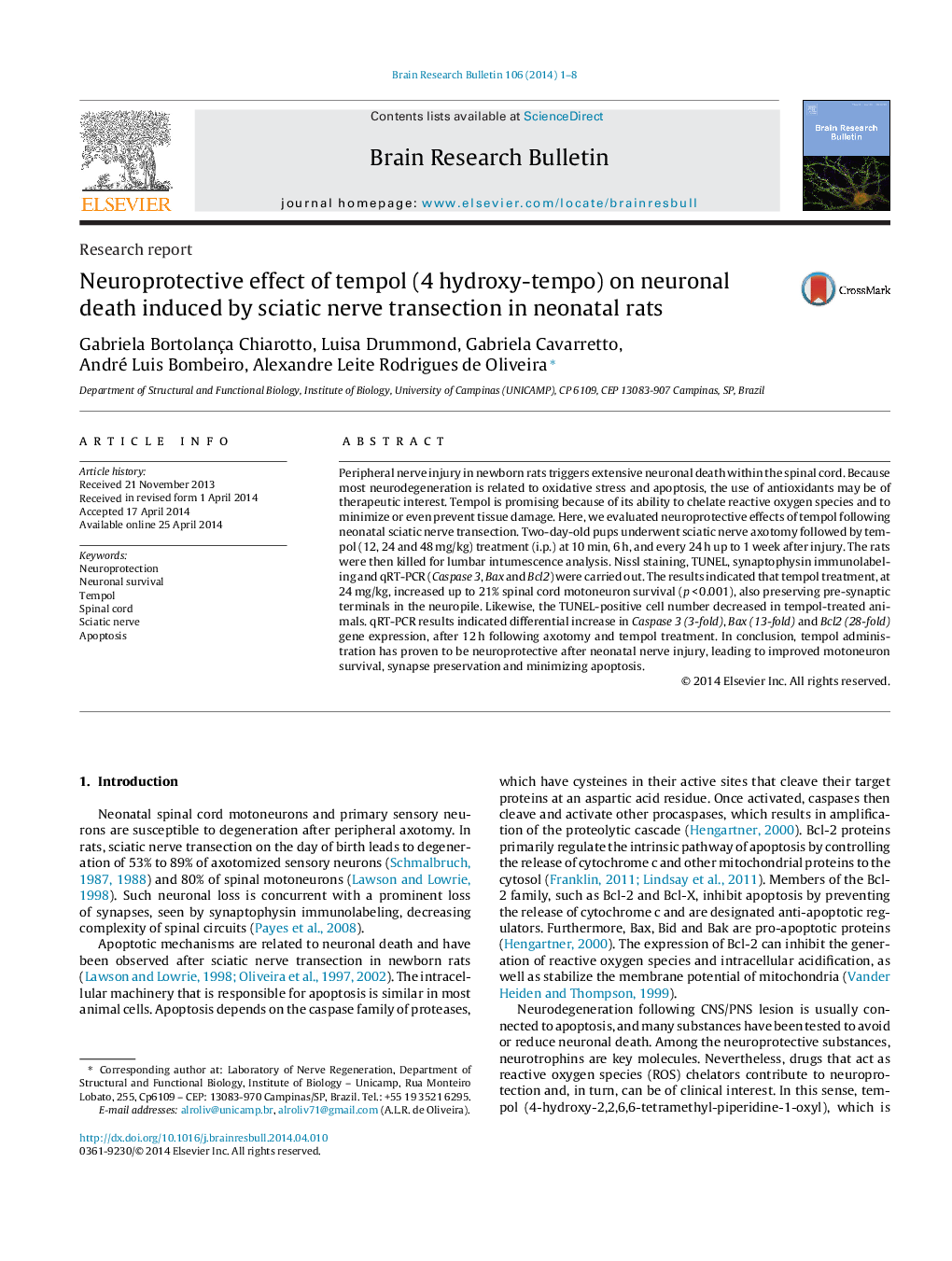| کد مقاله | کد نشریه | سال انتشار | مقاله انگلیسی | نسخه تمام متن |
|---|---|---|---|---|
| 4318794 | 1613249 | 2014 | 8 صفحه PDF | دانلود رایگان |

• Tempol reduces neonatal motoneuron degeneration following nerve axotomy.
• Tempol efficacy is related to the reduction of apoptotic events.
• Reduction of apoptosis by Tempol is related to the upregulation of Bcl-2 gene.
• Neuroprotection by Tempol is evident on sensory-motor integrative interneurons.
Peripheral nerve injury in newborn rats triggers extensive neuronal death within the spinal cord. Because most neurodegeneration is related to oxidative stress and apoptosis, the use of antioxidants may be of therapeutic interest. Tempol is promising because of its ability to chelate reactive oxygen species and to minimize or even prevent tissue damage. Here, we evaluated neuroprotective effects of tempol following neonatal sciatic nerve transection. Two-day-old pups underwent sciatic nerve axotomy followed by tempol (12, 24 and 48 mg/kg) treatment (i.p.) at 10 min, 6 h, and every 24 h up to 1 week after injury. The rats were then killed for lumbar intumescence analysis. Nissl staining, TUNEL, synaptophysin immunolabeling and qRT-PCR (Caspase 3, Bax and Bcl2) were carried out. The results indicated that tempol treatment, at 24 mg/kg, increased up to 21% spinal cord motoneuron survival (p < 0.001), also preserving pre-synaptic terminals in the neuropile. Likewise, the TUNEL-positive cell number decreased in tempol-treated animals. qRT-PCR results indicated differential increase in Caspase 3 (3-fold), Bax (13-fold) and Bcl2 (28-fold) gene expression, after 12 h following axotomy and tempol treatment. In conclusion, tempol administration has proven to be neuroprotective after neonatal nerve injury, leading to improved motoneuron survival, synapse preservation and minimizing apoptosis.
Journal: Brain Research Bulletin - Volume 106, July 2014, Pages 1–8